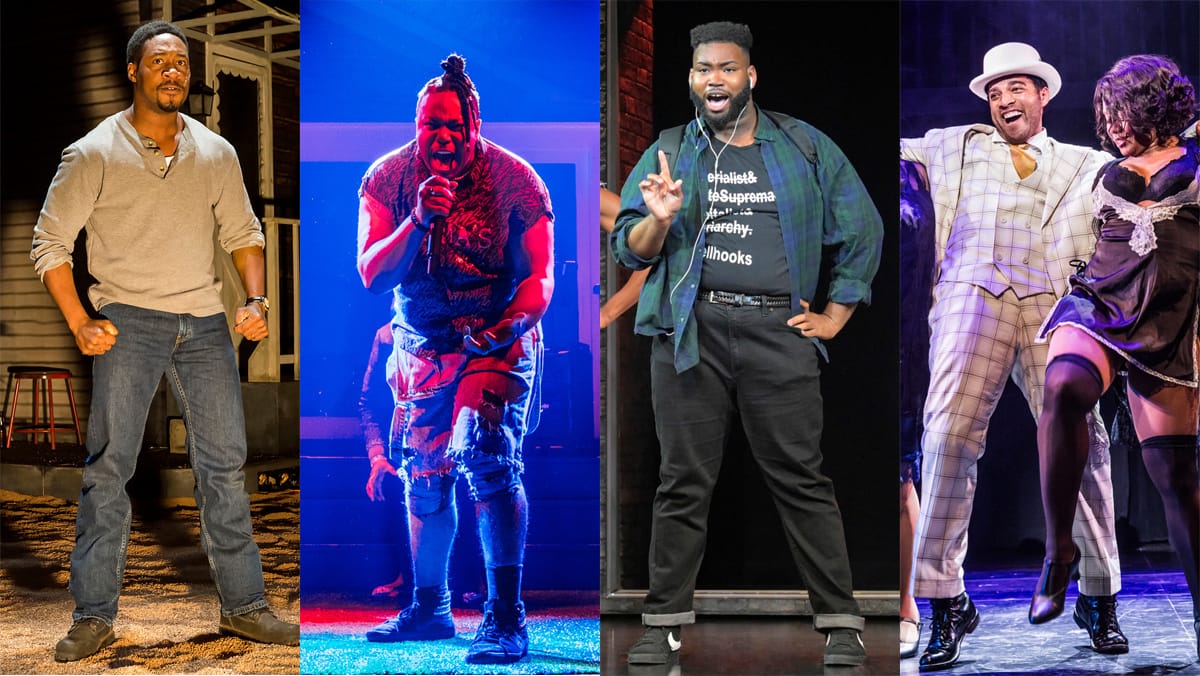It’s time to celebrate the incredible festival of Black theater that just happened across Los Angeles. Theater companies from across the city banded together from Pasadena to Westwood to celebrate almost half a century of Black playwrights from August Wilson and George C. Wolf to James Ijames and Michael R. Jackson. There were cross-promotions, ticket deals, a sharing of audience and resources; cross-pollination of audience members, and meaningful community engagement events that reached into our schools and youth. What a celebration! Too bad that didn’t really happen... Well, the plays happened but there wasn’t the collaboration across companies I just lauded. Let me take a step back. Over the past several months, the Geffen Playhouse, A Noise Within, Pasadena Playhouse, and the Ahmanson Theatre have presented four remarkable Black plays: Fat Ham, King Hedley II, Jelly’s Last Jam, and A Strange Loop. It's notable to have theaters across LA presenting Black playwrights nearly simultaneously. All four productions, individually, were worth seeing. Collectively, it was an amazing journey to ‘read’ or experience each of these plays ‘vertically’ as an individual work of art, but also to ‘read’ across them horizontally — allowing them to resonate with each other and display common themes. Hearing both the similarities and the stark differences is where the real magic happened. If you experienced all of them, you heard how profoundly missing fathers and complicated mothers impacted each story. You might have marveled at the striking similarities between the two queer black protagonists in Fat Ham and A Strange Loop — one could imagine the two characters almost as the same young, searching man. Across all four, each protagonist was desperately trying to have their voice heard and make a mark on a world that didn’t want to hear them. You would have heard four playwrights each experimenting with form and placing their work into a larger frame and legacy. You would have appreciated a commonality, a shared core. All of this is worth deep celebration, but it could have been so much richer. While each theater did its own outreach, Los Angeles theater missed an opportunity. In this age of co-productions and presenting productions born elsewhere — where audiences are precious and deep engagement with the community is essential — the artistic leaders at these four theaters missed an opportunity to make the sum greater than the parts. Dream with me about an alternate spring 2024, or really summer 2023 when the artistic directors (or executive directors or marketing folks or community engagement folks or even development) of each of these four theaters recognized the opportunity. Where they reached out and said, "Hey, we’re all doing similar shows. Let’s make something of it." Where instead of falling into the familiar siloed patterns, they instead thought about the whole city. Maybe they even pooled resources and partnered, collectively, with the community to make the shows accessible financially and geographically. While each show stayed a proud part of their respective theater seasons, they also existed under this banner of a celebration of Black theater. A hunch tells me with enough lead time, even more theaters might have joined in. Then along with the respective audience members at each theater, perhaps each theater expanded their audience with cross-over patrons (even the touring production at the Ahmanson had empty seats that could have been filled). Imagine that impact. Think about taking a group of young students to each of these four shows. A syllabus for an experiential course in theater, culture, and the history of the past half-century. It doesn’t take too much imagination to curate additional events that placed these works in a broader historical and societal context. Would every audience member go in for this? Of course not... but some would, and each audience member might have thought about a bigger idea. A celebration like this would have made each play speak more loudly as part of a greater whole. Importantly, each theater would have gained. It would have said something about Los Angeles theater. There would have been a city-wide idea about serving and celebrating a community (actually, multiple communities). Like each of us in our own lives, each of these artistic directors had a full plate just making their own seasons happen. But maybe, just maybe, if they’d taken a step back, they could have seen an opportunity for greater impact. All of us would have been richer for it. This is Anthony Byrnes Opening the Curtain on LA Theater for KCRW.
The City-wide Festival of Black Theater (That Almost Happened)
